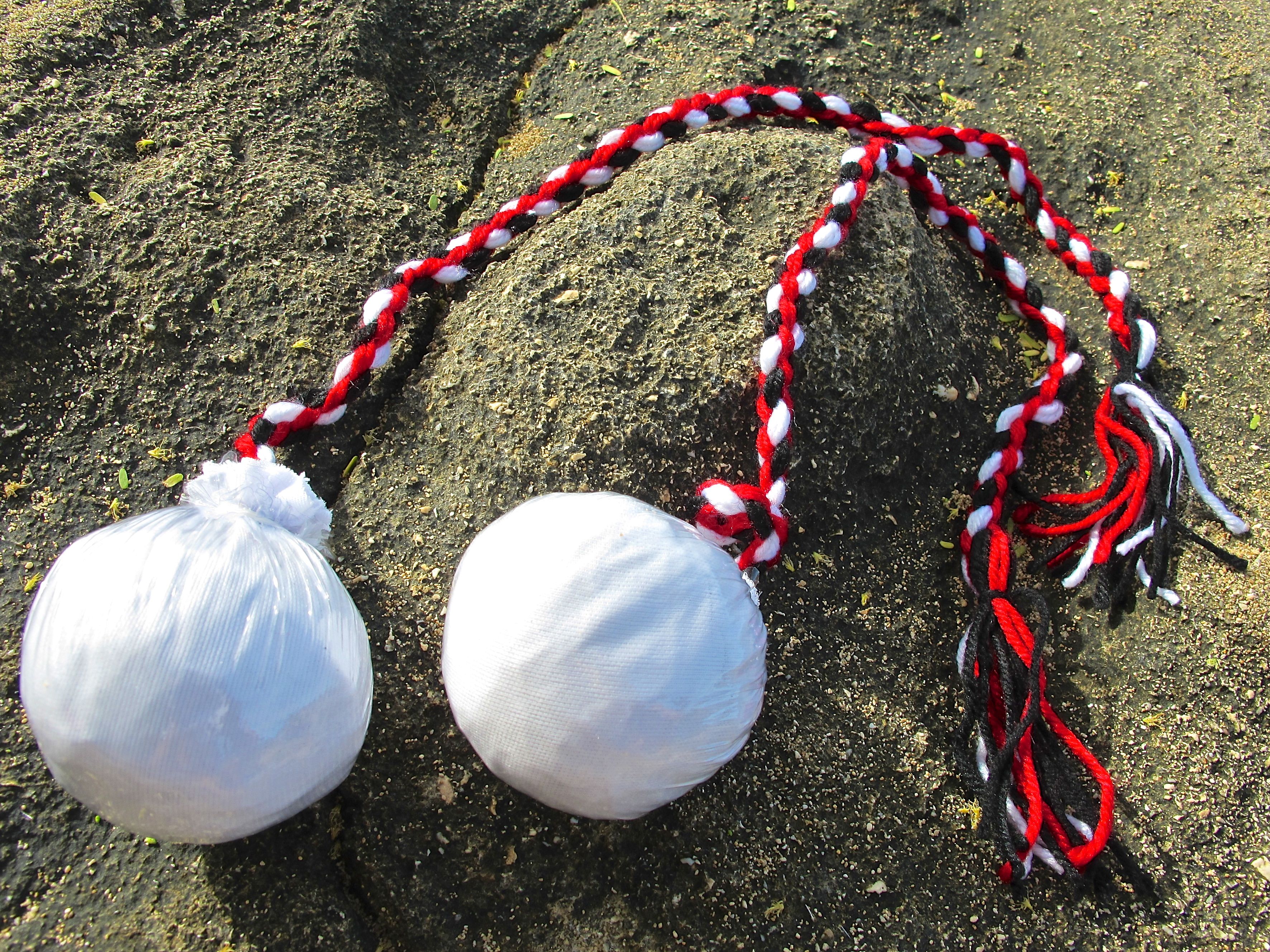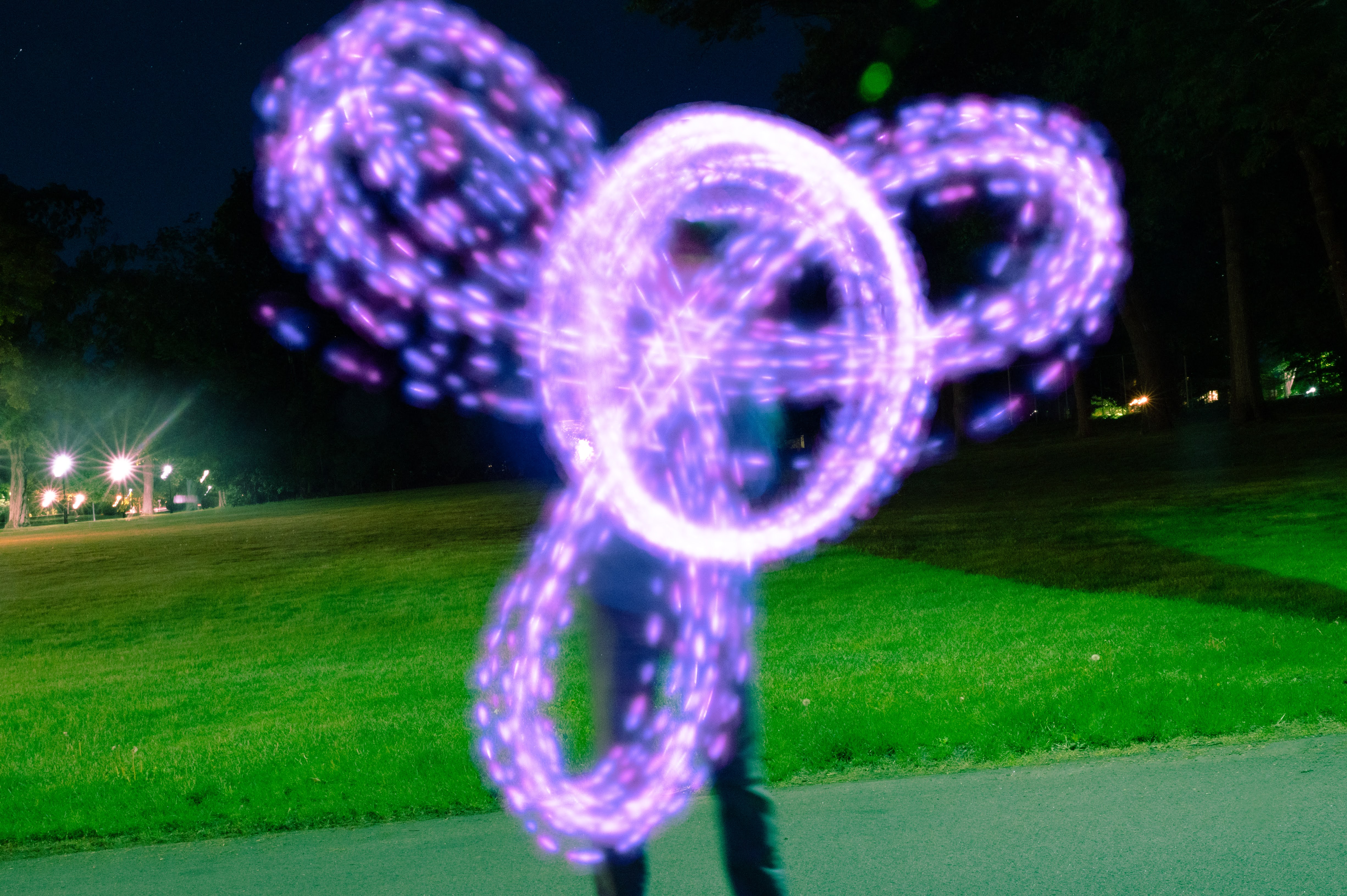Poi spinning is kind of like a better version of juggling
I highly recommend to anyone reading this the practice of poi spinning. Poi spinning is a form of dance that originated from the Maori people, the indigenous people of New Zealand. It involves instruments known as poi, which consist of objects attached to flexible tethers.

Here is a video of a traditional Maori poi dance.
The art has spread around the world in many different forms, the most well-known of which is probably fire spinning (using poi heads that can be lit on fire). I personally learned poi spinning with glow poi (lit up by LEDs). Here is a long-exposure photo of me spinning glow poi.

There are two main reasons I think poi spinning is interesting.
One, poi spinning requires a strong intuitive sense for manuvering the poi, kind of like juggling, hence the title. Actually, there’s an entire genre of dance called flow arts based around this idea. When one gains a strong intuitive understanding of the art, it becomes very natural, and one can enter a flow state while practicing or performing. This is no different from mastering any other skill, really, but I think the flow arts are particularly interesting because the props begin to feel like an extension of your body.
Two, poi spinning turned out to be a lot more mathematical than I expected. The primary examples of this are poi flowers, which are highly reminiscent of \(r = \sin(k\theta)\) flowers. For example, the move I was doing in the picture above is known as static v. triquetra. Static refers to the circle in the middle (a static spin), while triquetra refers to the 3 petal flower (\(r = \sin(3\theta)\)). The sheer technicality of the poi world nowadays is immense; static v. triquetra is just barely scratching the surface. This routine by Jonathan Alvarez is one demonstration. This contact poi demonstration is another.
So if you’re looking for a new hobby that is both physically and mentally engaging, look no further.
Further reading:
- DrexFactor Poi: highly recommend
- Other channels: playpoi, Liz Knights, Tim Goddard, Yuta Imamura
- Home of Poi: heard that they’re not doing well commercially, but still a good place to learn new moves
Development notes: